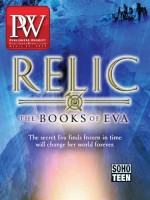Chronicling advances and research in the science world presents new challenges these days. The Science Writers’ Handbook: Everything You Need to Know to Pitch, Publish, and Prosper in the Digital Age (Da Capo Lifelong, May) comes from 35 members of the online science writers group SciLance, and is edited by seasoned pros Thomas Hayden and Michelle Nijhuis. We caught up with Hayden and Nijhuis to discuss the state of science writing.
PW: What do you hope this book will accomplish? Who do you see using it?
Hayden: From the beginning, we conceived of The Science Writers’ Handbook not just as a project from a community, but as a project for a community. One prominent science writer described it as codifying the tribal knowledge of science writers, and that’s really what we’re trying to do: collect, distill, and share the trade secrets of successful science writers and share them with the broader community of professional science journalists and writers, students, scientists interested in writing, and writers interested in science. We’re passionate about science, about journalism, and about the important work of making the processes and insights of science accessible and transparent to the broadest possible audience.
PW: What are the most common types of errors or mistakes you see in writing about science?
Hayden: To me, the most common mistake is the missed opportunity—to not write about science when one could have. Science and the research enterprise broadly defined can inform so many aspects of daily life and the major issues of our time, from obvious issues like dealing with natural disasters and seeking cures to diseases, to less obvious matters, such as improving the way we organize our elections or finding the best ways to teach our children. But because so many journalists and writers lack training in science or science writing, they miss many opportunities to make their stories more impactful. In my opinion, too much popular science writing falls into one of two categories: “gee whiz” stories that trivialize science by focusing on its quirkier fringes; and “rocket science” stories that paint scientists and the work they do as somehow otherworldly or inscrutable. The best science writing recognizes that science is everywhere, and accessible to anyone, so long as the writing makes it so. Science is a human endeavor, like any other, and scientists are people, too. The stories that show real people grappling with real issues of consequence are the ones I like best. The most painful errors, though, come when writers simply don’t understand basic principles of science and math—when they confuse percentages with percentage points, say, or atoms with molecules. The stakes for this kind of error are very high when it comes to health and medical reporting—not understanding statistics or the scientific process can lead reporters to give false hope to people with illnesses, say, or to fall for diet fads that sound scientific but don’t hold up under scrutiny.
PW: We’re looking at the latest trends in the reference category, the balance of digital vs. print materials. Do you have any observations to offer?
Nijhuis: My sense is that science writers’ research and reading is almost exclusively digital, with the occasional trip to the library for historical research, or to access obscure or restricted journal articles. Of course, as reporters we still do a great deal of field reporting and in-person interviews; there’s no digital substitute for time in the field. Even as travel budgets shrink, we’re finding ways to put ourselves where the stories are.



 Volume 260
Issue 15
04/15/2013
Volume 260
Issue 15
04/15/2013





